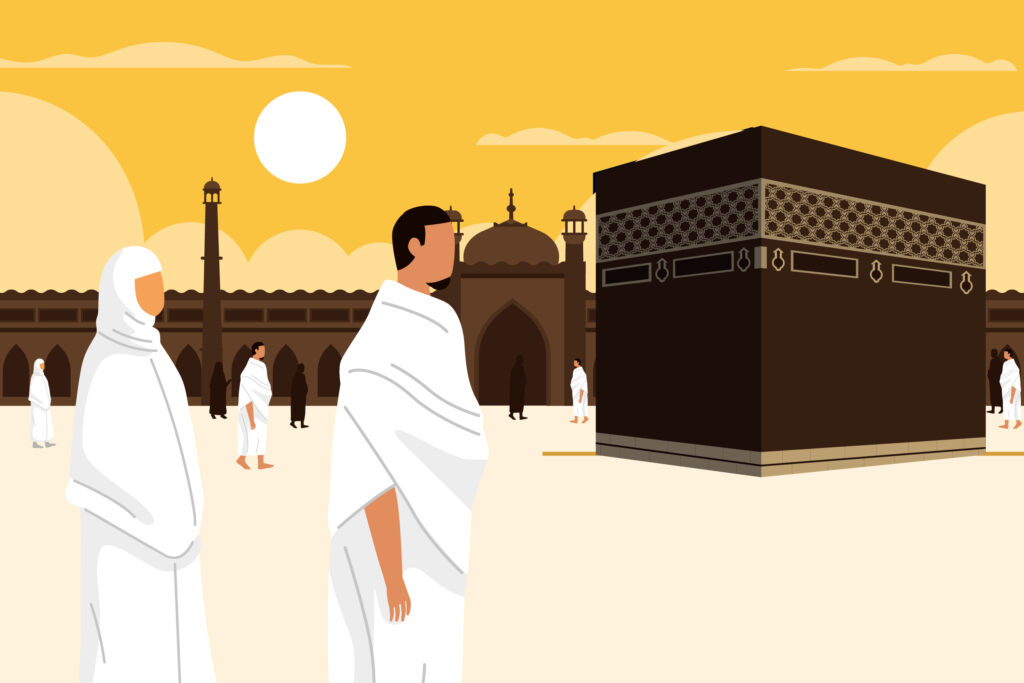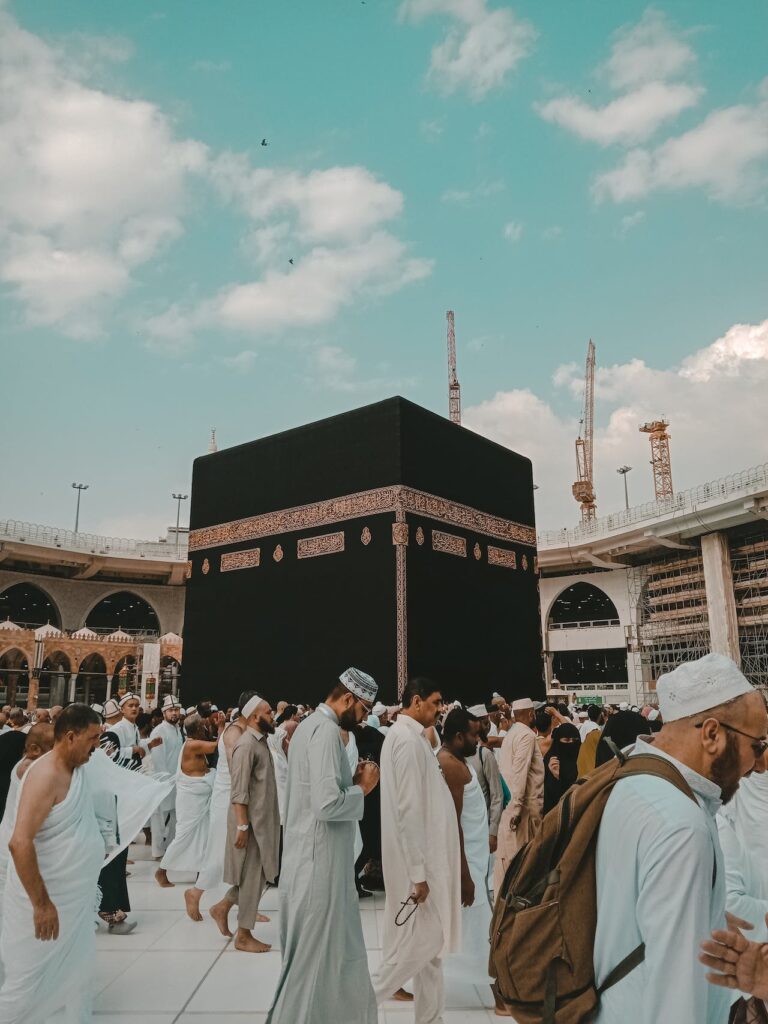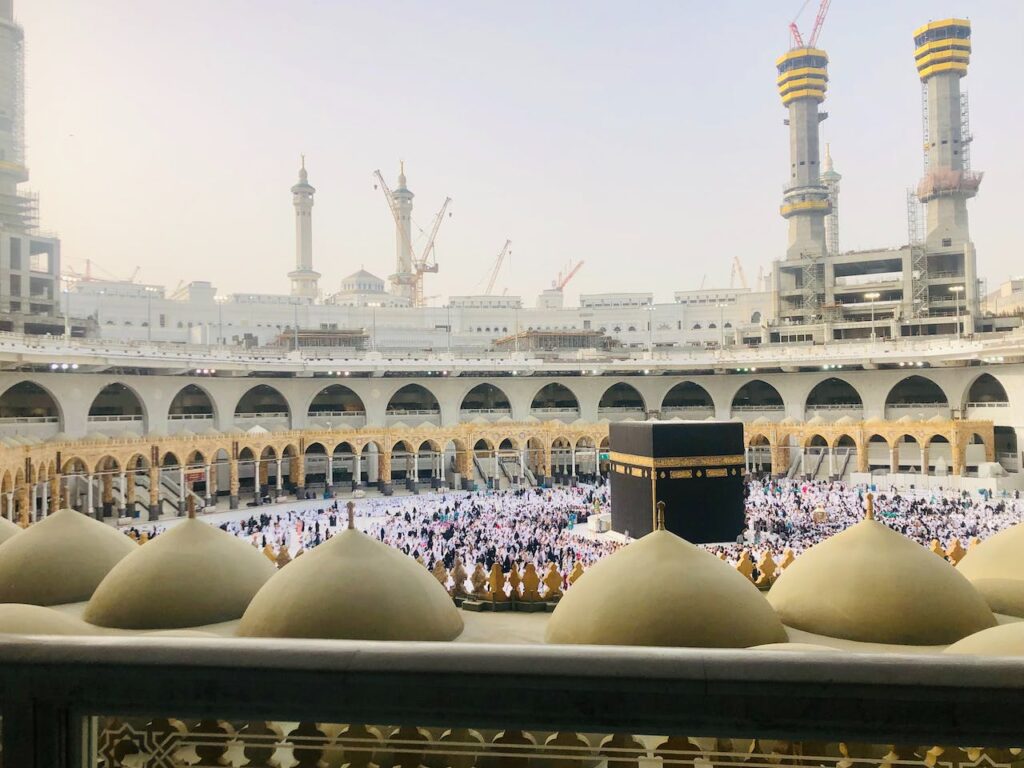Tawaf, the circumambulation of the Kaaba in Mecca, is a fundamental ritual of Hajj and Umrah, performed by millions of Muslims worldwide. This sacred act holds immense spiritual significance and symbolizes unity, devotion, and submission to Allah. To ensure the validity and acceptance of this ritual, it is crucial to understand and adhere to the rules of Tawaf. In this article, we will explore the key guidelines and etiquettes of Tawaf, providing a comprehensive understanding of the rituals involved.
The Rules of Tawaf
Here are the most important rules of Tawaf:
Firstly, Entering the State of Ihram
Before engaging in Tawaf, pilgrims must enter the state of Ihram, a state of ritual purity and restriction. Men don the Ihram garments, consisting of two white, seamless sheets, while women observe modest attire.
Note that: Entering the state of Ihram requires the intention and recitation of the Talbiyah. Pilgrims should ensure they are in a state of physical purity, having performed the required ablution (wudu).
Secondly, the Starting Point and Direction
Tawaf commences at the Black Stone (Hajr-e-Aswad), located at the southeastern corner of the Kaaba. Pilgrims should approach it with utmost reverence and try to touch or kiss it if possible.
Additionally, The Tawaf is performed in an anti-clockwise direction, facing the Kaaba throughout the ritual. The starting point is marked by a green light at the ground level, and it is preferred to start from there if possible.
Rules of Tawaf: Tawaf Etiquette
During Tawaf, pilgrims should observe the following etiquettes:
- Walking: It is recommended to perform Tawaf at a moderate pace, considering the crowd and the need to maintain personal space.
- Covering Shoulders: Men should keep their right shoulder bare throughout Tawaf, a practice known as “Idtiba.”
- Raml: During the first three circuits of Tawaf, men may perform Raml, which involves a slight jog or brisk walk with small, rapid steps.
- Istilam: It is recommended, but not obligatory, to touch or kiss the Black Stone (Hajr-e-Aswad) during each circuit if it is accessible. If not possible, pointing towards it is sufficient.
- Supplications: Pilgrims are encouraged to recite various supplications and remembrances during Tawaf, such as reciting verses from the Quran or seeking forgiveness.
- Avoiding Harm: Pilgrims should be mindful of others, avoiding pushing, shoving, or causing harm to fellow worshippers.
- Inner Reflection: Tawaf is not just a physical act but also an opportunity for spiritual introspection and connection with Allah.
Pilgrims should strive to maintain a state of mindfulness and focus throughout the ritual.
After Completing the Tawaf
Upon completing the seven circuits of Tawaf, several necessary steps should be followed:
- Maqam Ibrahim:
After Tawaf, it is recommended to offer two units of prayer behind Maqam Ibrahim, a stone structure near the Kaaba, if possible.
- Zamzam Water:
Pilgrims may drink from the blessed Zamzam well and make supplications.
- Sa’i:
Following Tawaf, pilgrims proceed to perform Sa’i, which involves walking briskly between the hills of Safa and Marwa.
- Shaving or Trimming Hair:
After completing Sa’i, men are required to either shave their heads completely or trim a small portion of their hair. Women are only required to trim their hair length.
- Exiting the State of Ihram:
With the completion of Tawaf and Sa’i, pilgrims exit the state of Ihram, allowing them to resume normal activities and wear regular clothing.
Conclusion
In conclusion, Tawaf is a sacred ritual that holds immense spiritual significance in Islam. Adhering to the rules of Tawaf ensures the validity and acceptance of this act of worship. By understanding the etiquette and guidelines, pilgrims can perform Tawaf with reverence, devotion, and unity.
In addition, It is essential to approach the ritual with a focused mind, striving for a deep connection with Allah and seeking spiritual purification. May Allah accept the Tawaf of all the pilgrims and grant them the
blessings and rewards associated with this sacred act of worship.






